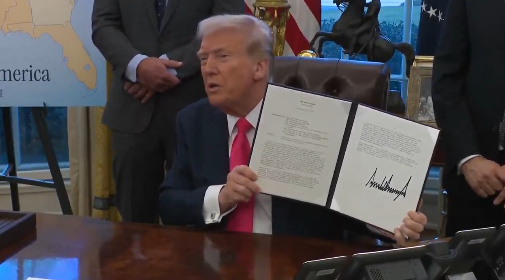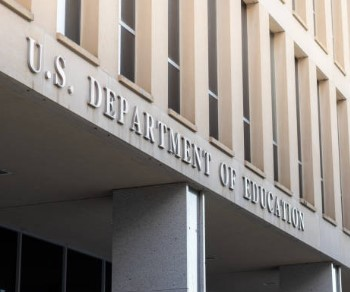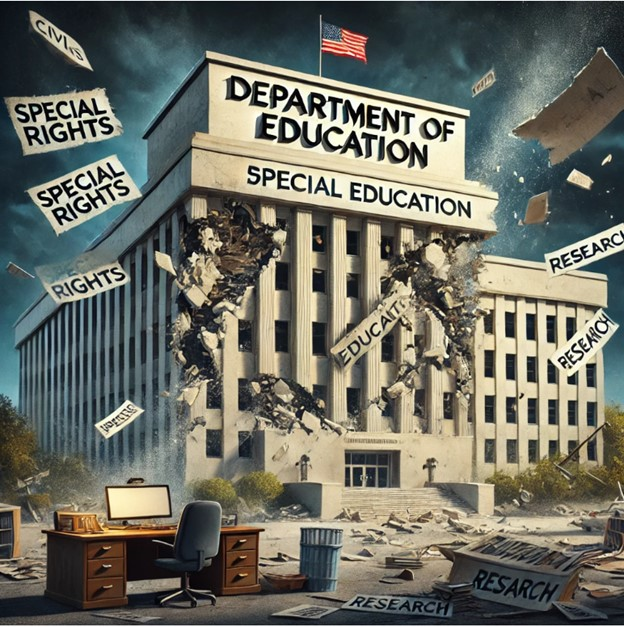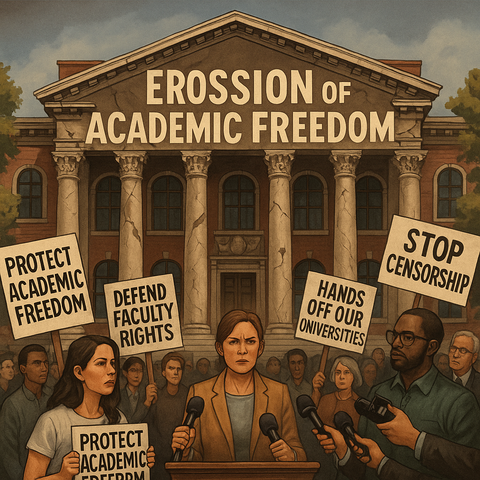Trump’s Education Overhaul: Dismantling the Department Sparks National Uproar and Uncertainty
Input
Modified
Disabled Students Face Uncertain Future as Federal Protections Weaken A Nation Divided: Political Leaders Clash Over the Role of Federal Education Oversight Promises, Pitfalls, and the Path Ahead: What Comes After the Department of Education?

Disabled Students Face Uncertain Future as Federal Protections Weaken
The announcement of President Donald Trump’s executive order to dismantle the U.S. Department of Education has sent shockwaves through the education sector, state governments, and advocacy groups across the country. While the Trump administration frames the move as a return to “local control” and a blow to federal bureaucracy, critics warn that the sudden policy change threatens vital services for vulnerable students, particularly children with disabilities, and lacks a clear, functional replacement strategy.
As debate unfolds, this dramatic overhaul poses critical questions about how America values its educational institutions, the future of federal support for students, and what it means to govern a nation whose youth remain its most important investment.
One of the most immediate and dire concerns raised by advocates and educators is how dismantling the Department of Education would strip essential resources from children with disabilities. The Department has historically played a central role in enforcing the Individuals with Disabilities Education Act (IDEA), ensuring that millions of students with special needs receive appropriate support, accommodations, and legal protections.
With the Office for Civil Rights already weakened by recent layoffs and the closure of several regional branches, families now fear that if the Department ceases to exist, they will have nowhere to turn when disputes arise between them and school districts. This could have devastating consequences in communities where local education agencies lack resources or the political will to prioritize disability services without federal oversight.
“Without the Department of Education, the systems designed to protect our children could collapse,” said a parent advocate in Georgia. “We’re talking about a generation of children potentially being denied their right to learn in inclusive, supportive environments.
In response to the backlash, the Trump administration has stated that its intention is not to abandon students, but to decentralize federal authority and restore educational decision-making to states and local governments.
Education Secretary Linda McMahon, tasked with overseeing the dismantling process, said certain programs—like those serving children with disabilities—would be moved under the Department of Health and Human Services (HHS). Student loan programs, meanwhile, may be managed by the Small Business Administration (SBA).
These proposals, however, raise more questions than they answer.
Neither HHS nor the SBA has historically managed K–12 education services or federal financial aid for college students, leaving many to wonder whether they have the infrastructure or expertise to take over. The sudden nature of the change, executed via executive order without robust public consultation or congressional debate, has sparked fears that critical services may fall through the cracks during the transition.
The abruptness of the executive order has left many educators, school districts, and states scrambling for clarity. While conservative leaders have long advocated for shrinking or eliminating the Department of Education, the reality of implementing such a sweeping change is proving more complex than campaign rhetoric.
For decades, the Department has played a pivotal role in distributing federal funds for low-income schools, enforcing civil rights protections, managing student loan programs, and setting national standards. Undoing that framework without a well-structured transition plan risks administrative chaos, lapses in funding, and a vacuum in leadership.
“The country is simply not prepared for this,” said a policy analyst at a Washington think tank. “You can’t rip out the spine of a system and expect the body to keep functioning. We need time, planning, and deep coordination.”

A Nation Divided: Political Leaders Clash Over the Role of Federal Education Oversight
While much of the public discourse has focused on opposition to the order, it has also received strong support from conservative state leaders. Kentucky Lieutenant Governor Jacqueline Coleman voiced her approval, saying the order reflects a long-overdue correction to what she described as federal overreach in education.
“The people closest to students—parents, teachers, and local school boards—know best how to meet their needs,” Coleman said. “We don’t need bureaucrats in Washington dictating how Kentucky teaches its kids.”
Her statement underscores a fundamental ideological divide: supporters of the plan believe dismantling the Department will foster innovation, reduce inefficiencies, and give states more freedom to tailor education to local communities. Critics argue that this could also mean a lack of accountability, uneven quality, and a patchwork of services that leaves vulnerable students behind.
On the other side of the political aisle, fierce opposition to Trump’s decision has come from Democratic lawmakers like Oregon Representative Andrea Salinas, who condemned the executive order as “unconstitutional” and “reckless.”
“Education is the great equalizer,” Salinas said in a press conference. “This decision would pull the rug out from under millions of children—especially those with disabilities, those in rural areas, and those from low-income families.”
Salinas highlighted how federal funds support crucial programs in Oregon and nationwide: Title I funding for under-resourced schools, Pell Grants for low-income college students, and Head Start for early childhood education. She warned that removing federal oversight could jeopardize access and equity, threatening decades of progress.

Promises, Pitfalls, and the Path Ahead: What Comes After the Department of Education?
For many Americans, this debate transcends partisan lines. Education is not just a policy issue—it is the foundation of the nation’s future.
Across the political spectrum, there is consensus that the education system needs reform. Inequities persist, standardized testing dominates, and funding disparities widen achievement gaps. But critics of the Trump order argue that dismantling the Department of Education without a robust replacement plan does not fix these problems—it risks worsening them.
“Education is how we build the next generation of innovators, workers, voters, and leaders,” said a superintendent in Pennsylvania. “This isn’t just about bureaucracy—it’s about the soul of the country.”
Some analysts concede that, over time, the decentralization could inspire localized innovation and customized solutions. However, they warn that the short-term disruption—confusion over funding, unclear lines of authority, and service interruptions—could have profound consequences.
It’s Been a Long-Term Conservative Goal: The idea of eliminating the Department of Education dates back to the Reagan era. Trump’s order is the first significant move to realize that ambition since the Department was created in 1979.
It Requires Congressional Approval: Despite the executive order, fully dismantling the Department will require legislation passed by both chambers of Congress—an uphill battle, especially with slim majorities.
Programs Would Be Scattered Across Agencies: The Trump administration proposes splitting Department programs between other agencies like HHS and the SBA, but logistical and legal challenges abound.
Impact on Federal Student Aid Is Unclear: With millions relying on FAFSA and Pell Grants, advocates worry that the transition could delay aid disbursement or result in gaps for low-income and first-generation college students.
President Trump’s effort to dismantle the Department of Education may be one of the most consequential and contentious education policy moves in recent U.S. history. While some see it as a path toward more responsive, community-driven education systems, others view it as a dangerous gamble that could erode access, protections, and quality.
Whether the nation can weather the transition depends on whether new structures can be quickly and effectively put in place—and whether the voices of educators, families, and students are heard in shaping what comes next.
In the end, the success of this initiative won’t be measured in headlines or political victories. It will be measured in classrooms—by whether every child, regardless of zip code or background, still gets the opportunity to learn, grow, and succeed.





















